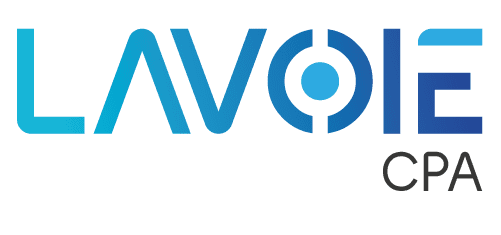Budgeting often leaves business professionals drifting aimlessly in a sea of details.
With so much information available, they struggle to determine which factors will propel their company forward and which will sink it altogether.
Fortunately, driver-based planning can serve as a beacon.
Intuitive and flexible, this budgeting technique allows companies to identify which factors have the greatest impact on financial performance. The budget is then built around these factors, also known as key drivers.
The result? A nimble and responsive budget that eliminates white noise by focusing on variables that actually move the needle.
Keep reading for more insight into this innovative budgeting technique.
What Is Driver-Based Planning?
Traditional budgeting methods focus heavily on details that have little impact on the bottom line. Comparatively, driver-based planning focuses on key drivers that are vital to a business’s financial performance and future success.
Though key drivers vary from industry to industry, common examples include:
- Call volume
- Quantity Produced
- Product price
With driver-based planning, organizations can create models that explore the causal relationships between key drivers and financial outcomes. These models can then be used to make operational decisions.
Driver-Based Planning in Action
At its simplest, driver-based planning helps businesses bridge the gap between budgeting and everyday operations.
Your company can implement this forecasting technique in four steps.
Step 1: Identify Qualitative Goals
Much like in traditional budgeting, a driver-based model begins with an understanding of what your company hopes to accomplish.
This goal doesn’t need to be overly complicated or even very specific. It can be as simple as “drive revenue growth” or “increase profitability.”
Step 2: Establish Quantitative KPIs
After determining your high-level qualitative goal, map out how you will measure success. For most companies, this involves establishing key performance indicators (KPIs).
Common examples of KPIs include net profit, operational cash flow, and inventory turnover.
Step 3: Isolate Key Drivers
Now, your company must determine which factors – or key drivers – have the greatest impact on those KPIs.
Hundreds of variables may affect a company’s bottom line. The objective is to isolate those that matter the most.
Step 4: Develop the Model
The last step is to create a quantitative model based on your company’s key drivers. But a successful driver-based model can take days, if not weeks, to develop in a spreadsheet.
Fortunately, financial planning and analysis (FP&A) software can minimize legwork while delivering a more precise and accurate forecasting system.
Selecting Key Drivers With Momentum
Driver-based planning is grounded in the Pareto Principle.
Also known as the 80/20 Rule, the Pareto Principle states that 80% of outcomes come from 20% of causes. In layman’s terms that means your company’s financial performance hinges on a handful of inputs.
Determining which inputs – or key drivers – are worth your attention can be challenging. However, key drivers should be easy to manipulate. In other words, your company should be able to control key drivers with a high level of accuracy.
For example, the number of sales representatives can easily be increased or decreased. However, the sales representative attrition rate is less predictable and harder to change.
Why Businesses Are Adopting a Driver-Based Approach
An increasing number of companies are moving away from traditional models and toward the driver-based approach.
Why? Because this innovative methodology has clear advantages over the budgeting techniques of yesteryear.
1. Driver-based planning puts the focus on key metrics that impact organizational success.
Traditional models adopt a bottom-up approach, forcing the C-suite to wade through irrelevant information. But with a driver-based model, businesses can drill down on the metrics that actually matter.
2. Driver-based models allow teams to quickly assess the impact of internal or external changes.
In a rapidly shifting economy, the ability to pivot on a dime is invaluable. Luckily, driver-based plans allow companies to manipulate variables, run different scenarios, and determine how imminent changes could impact the bottom line.
3. Driver-based approach nurtures operational alignment.
Driver-based models link financials to the everyday activities of your company. This encourages finance professionals to collaborate with department heads to truly understand which inputs are linked to improved performance.
4. Driver-based models ensure data integrity.
The sheer volume of information associated with traditional models contributes to inaccuracies. But with driver-based planning, companies can focus on collecting a small amount of accurate, valid data.
5. Driver-based planning helps stakeholders see the big picture.
The chief advantage of driver-based planning is simplicity. This budgeting approach allows your company to explain – in plain language – the causal relationships between key inputs and profitability to stakeholders.
How Driver-Based Financial Planning Tools Maximize Precision
Driver-based models can give companies a competitive edge by illuminating key drivers that affect the bottom line.
However, building one of these models in a spreadsheet can be tedious, requiring days of work from even the savviest of finance professionals. Worse yet, most spreadsheets get bogged down by the macros and equations needed for these models.
Luckily, there’s a better solution. Driver-based FP&A software can offer cutting-edge precision and customizable forecasting solutions with a single click.
Lavoie CPA and Jirav Software Solutions
At Lavoie CPA, we are dedicated to delivering strategic support so that businesses can focus on what matters most: catalyzing growth. With this in mind, we have partnered with Jirav, a driver-based financial planning tool, to help clients soar to greatness.
“Jirav gives business professionals the clarity needed to make their next big move.”
— Sharai Lavoie, CEO of Lavoie CPA
As our preferred FP&A software, Jirav gives you a real-time look at financial projections. Rather than build budgets from last year’s stale data, you can rely on Jirav to help you visualize the future and test out different scenarios based on key drivers.
Contact Lavoie’s financial experts to see if Jirav is the right software solution for your business.

